The Fifth Largest City in California (in the late 1850s) -- First Cinco de Mayo Celebration (1862)
Rare and extremely early birdseye view of the Gold Rush boom town of Columbia in Tuolumne County, California.
The view shows Columbia 1 year after it was considered as a possible location for the permanent state Capitol of California.
Rare early view of Columbia, showing a wagon with passengers coming from town on Main Street approaching Main Gulch Mine in foreground. A number of flumes are shown at left and right of town with men working.
The views shown around the map include:
- Graves & Cibiel, Broadway Drugstore
- Jas. McChesney / Toomy & O'Keefe San Francisco Store
- Bartlett & Clark, Livery Stable
- Albert Leavitt, Towles & Leavitt Books, Stationery, & Fancy Goods, Pacific Express and San Francisco Lager Beer Saloon by Haag & Heynemann
- Duchow & Steele, Columbia Gazette Printing Office
- McKenty & Church
- Oxley & Campbell, Columbia Drugstore
- Odd Fellows Hall
- North Church
- Joseph Wittmann & Co., Columbo Saloon
- Niles Mills private residence
- Clark's Hotel; Jackson & Stone
- D.O. Mills & Co. Bankers, Tuolumne County Water Co., and Post Office
- Donnell & Parsons
- P.G. Ferguson, Ferguson's Block [building]
- W.G. Van Arsdall, American Hotel
- Eagle Cottage by Odenheimer & Northey
- Presbyterian Church
- Masonic Hall
Columbia, California
The original inhabitants of the Columbia area in California were the Miwok people.
Columbia was founded in 1850. During the California Gold Rush, Columbia quickly became a bustling mining town after gold was discovered nearby. By 1852, Columbia's infrastructure included 8 hotels, 4 banks, 17 general stores, 2 bookstores, 1 newspaper, 3 churches, and over 40 drinking and gambling establishments. Between 1850 and the early 1900s, an estimated $87 million worth of gold, equivalent to about $2.39 billion in 2022 dollars, was extracted from the area.
The population of Columbia surged to 5,000 shortly after gold was found, reaching a peak of around 25,000 at its zenith, making it California's fifth-largest city at the time. Notably, the town hosted the first official Cinco de Mayo celebrations in the United States in 1862, marking a celebration by Mexican miners of the Mexican victory over French forces at the Battle of Puebla.
Columbia experienced significant fires in 1854 and 1857, which led to a shift in construction materials towards brick and iron by wealthier merchants, though other parts of the town were rebuilt with wood and canvas.
The town's bid to become the permanent California state capital in 1854 was unsuccessful. As the gold supply dwindled, miners began to excavate under the town itself, eventually leading to the town's decline in prosperity.
Despite its decrease in mining activity, Columbia never became a ghost town. In 1945, the creation of the Columbia State Historic Park helped preserve the town's historical buildings. The park remains a testament to California's gold rush era, attracting visitors interested in the history and legacy of this period.
Rarity
The view is very rare on the market. The last example listed by RBH is Edward Eberstadt, Catalog 133 (#208), offered for sale for $150 in 1954.
OCLC and Reps both only locate the examples at the Bancroft (Honeyman Collection).
We also note an example in the California State Library.









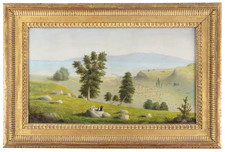
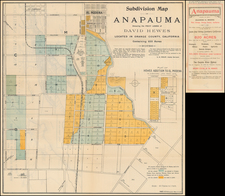
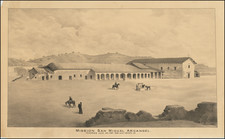
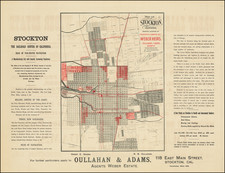
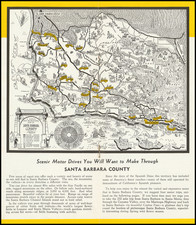
![[ Gold Rush Era Sacramento ] Chart of the Sacramento River From Suisun City to the American River California . . . 1850](https://storage.googleapis.com/raremaps/img/small/98242.jpg)